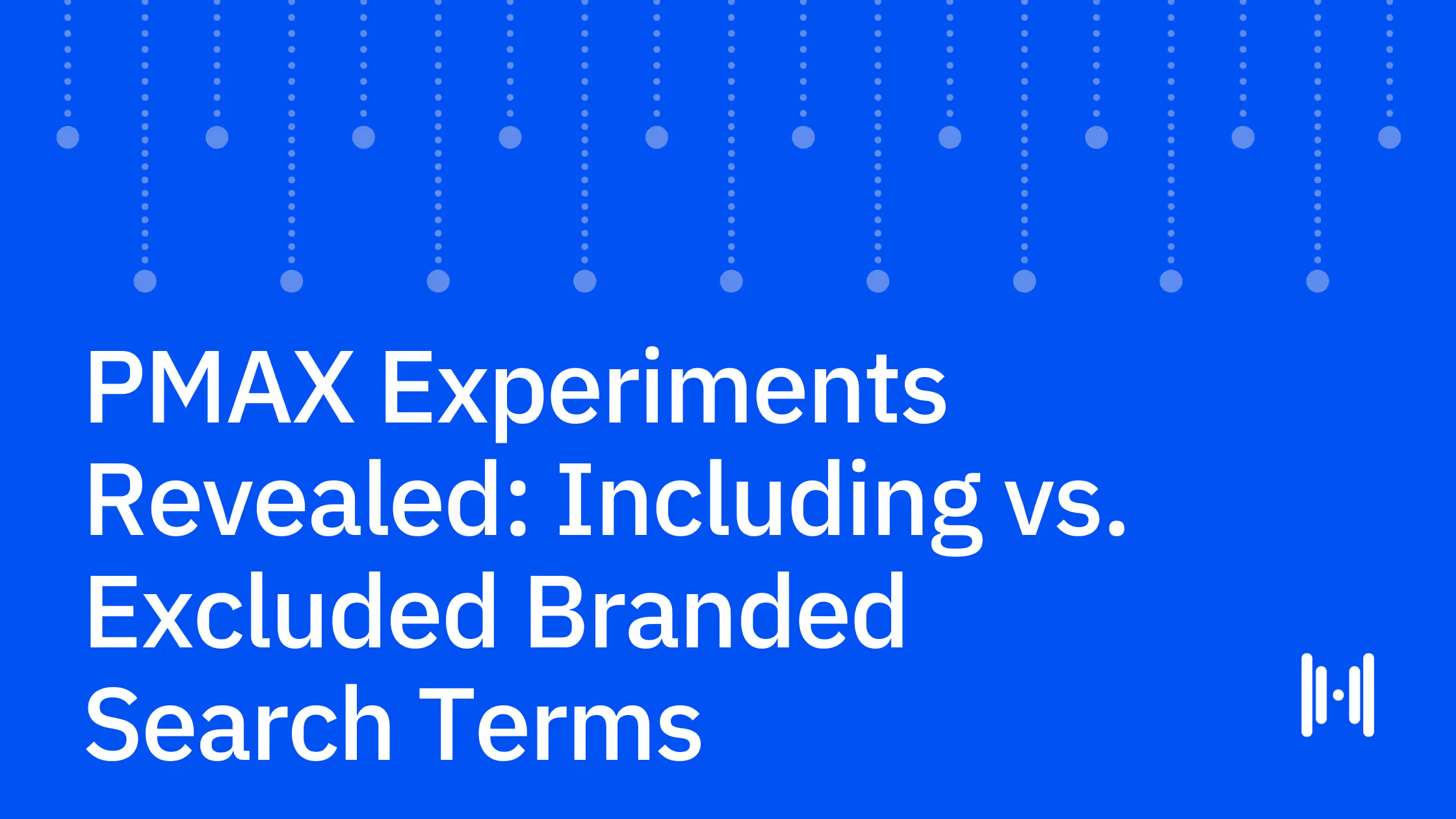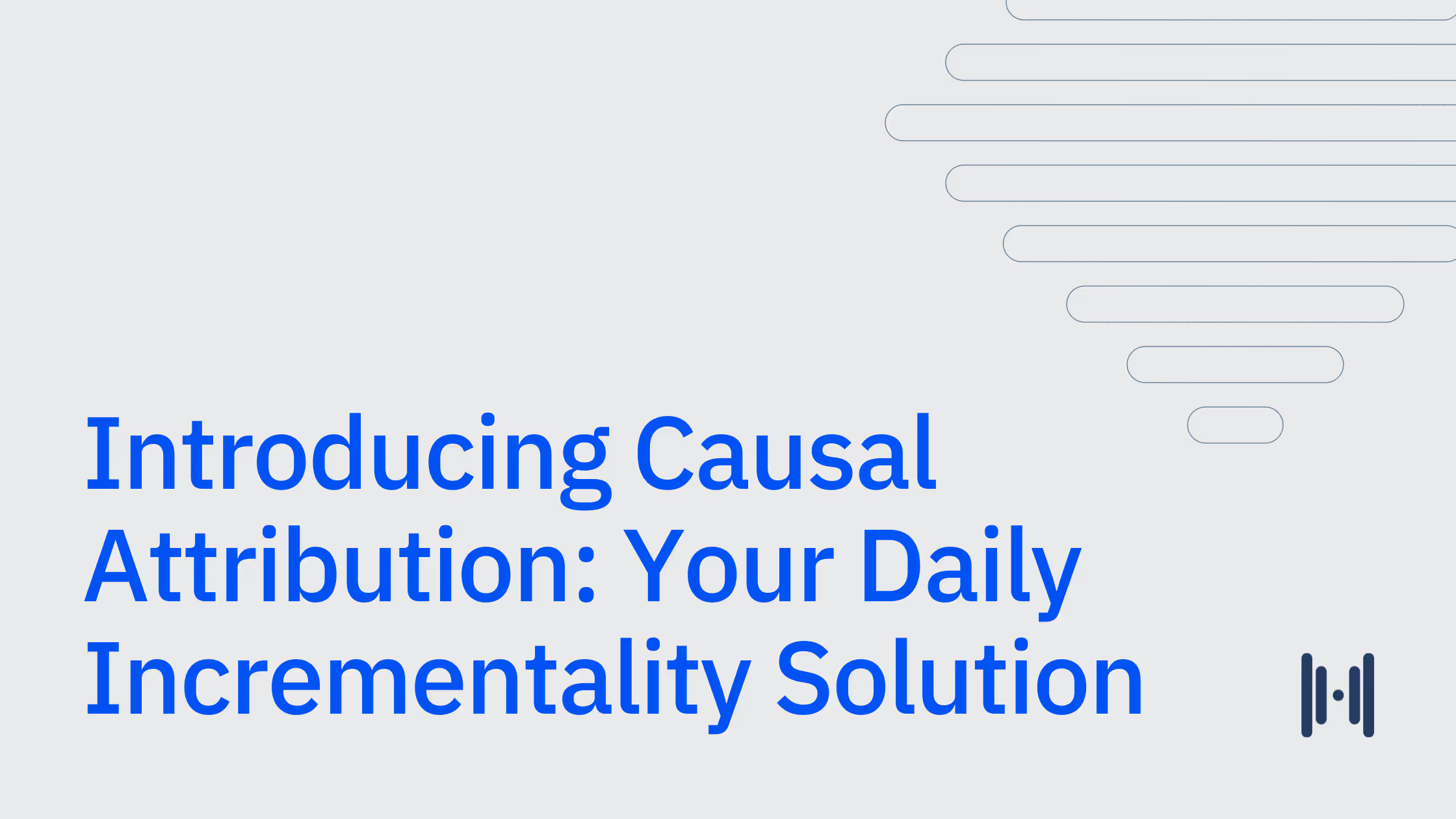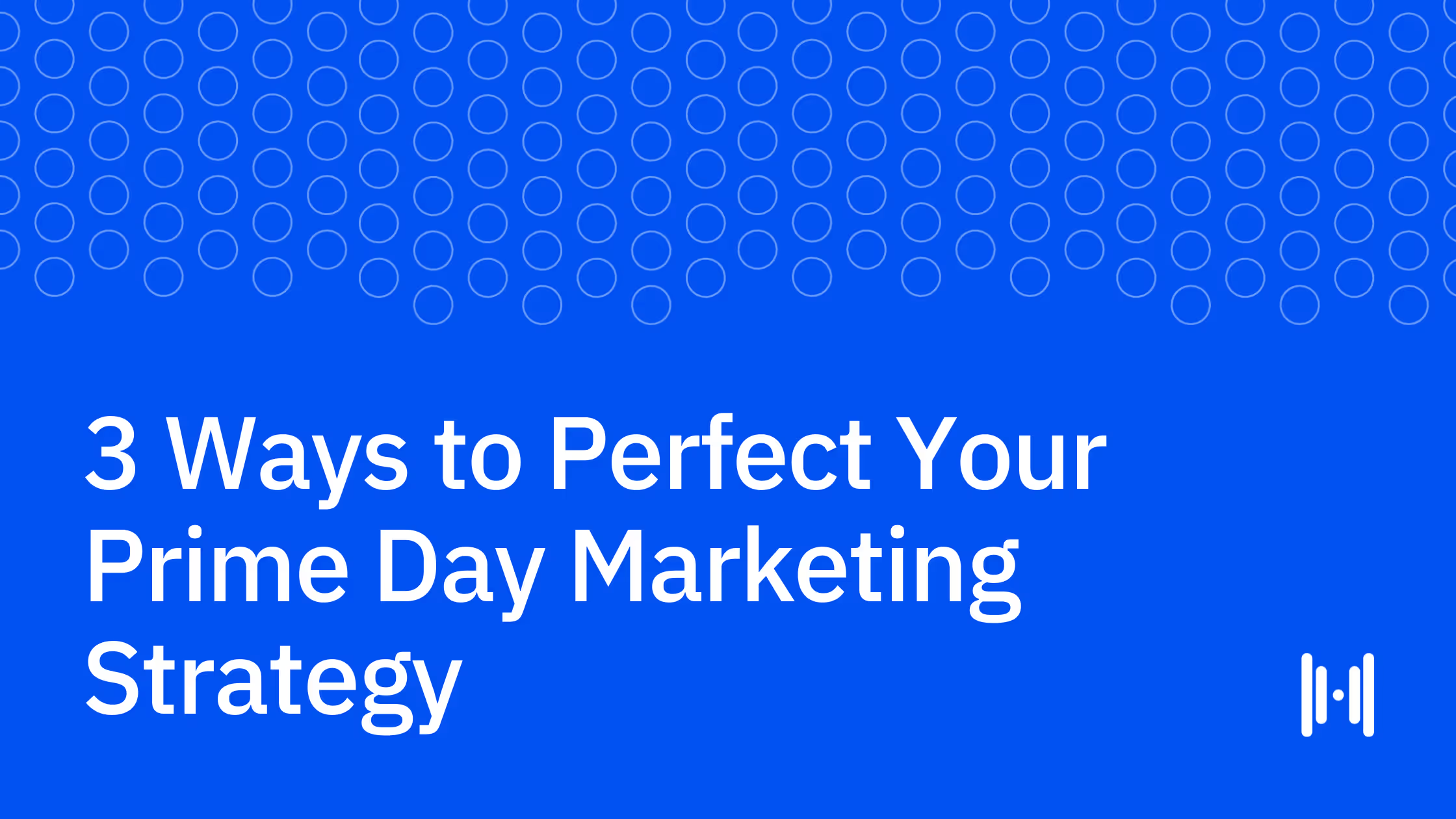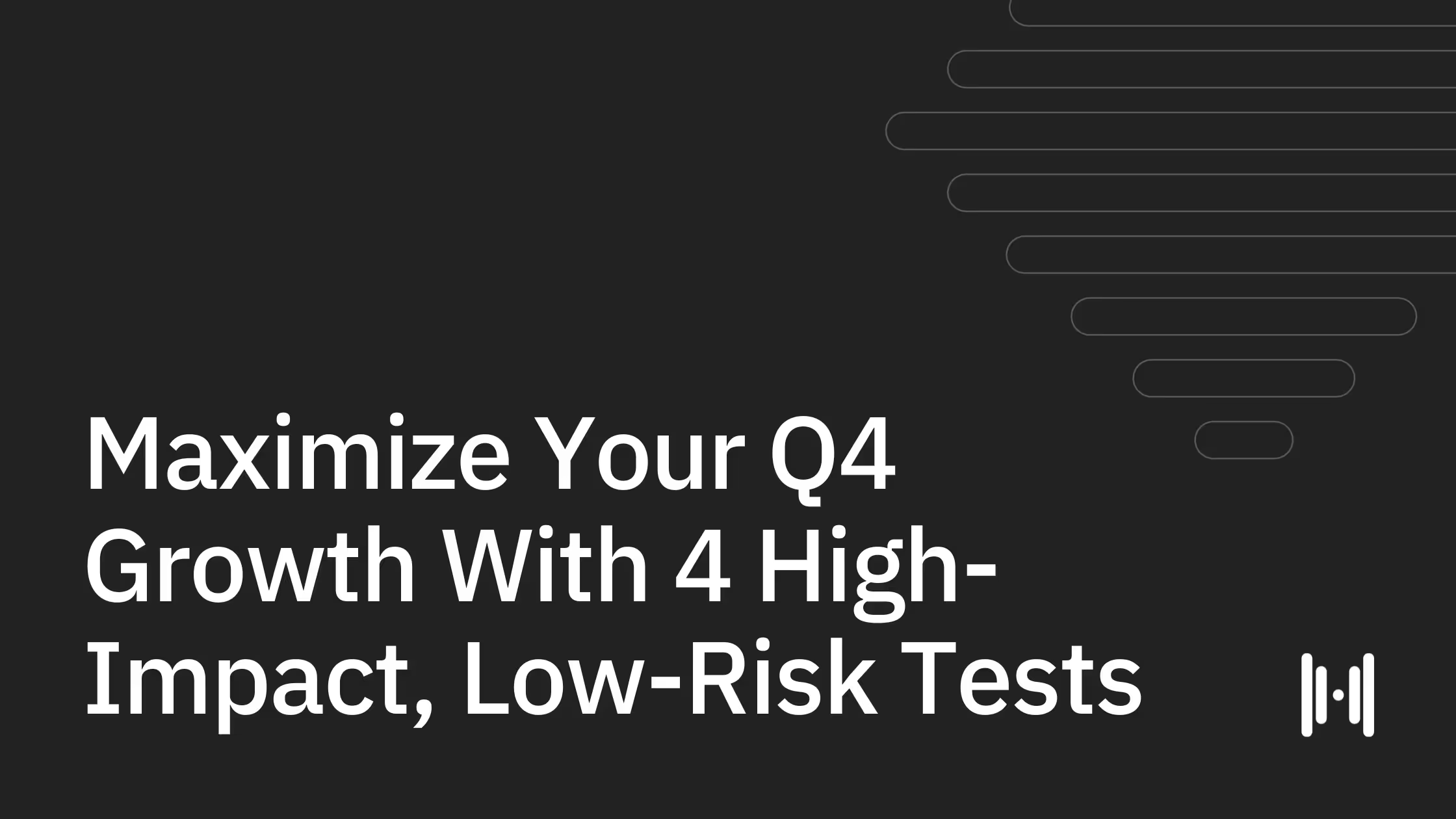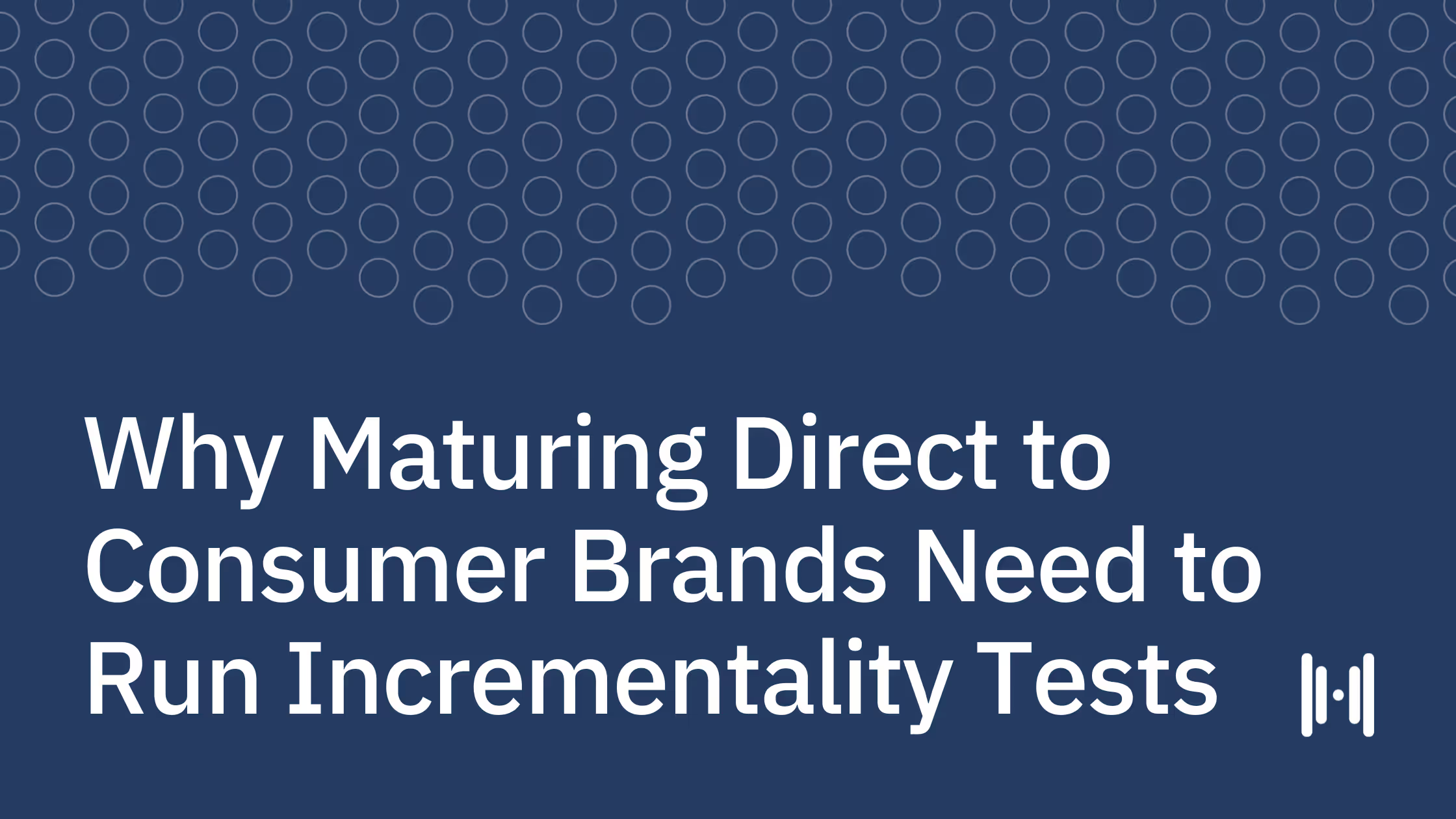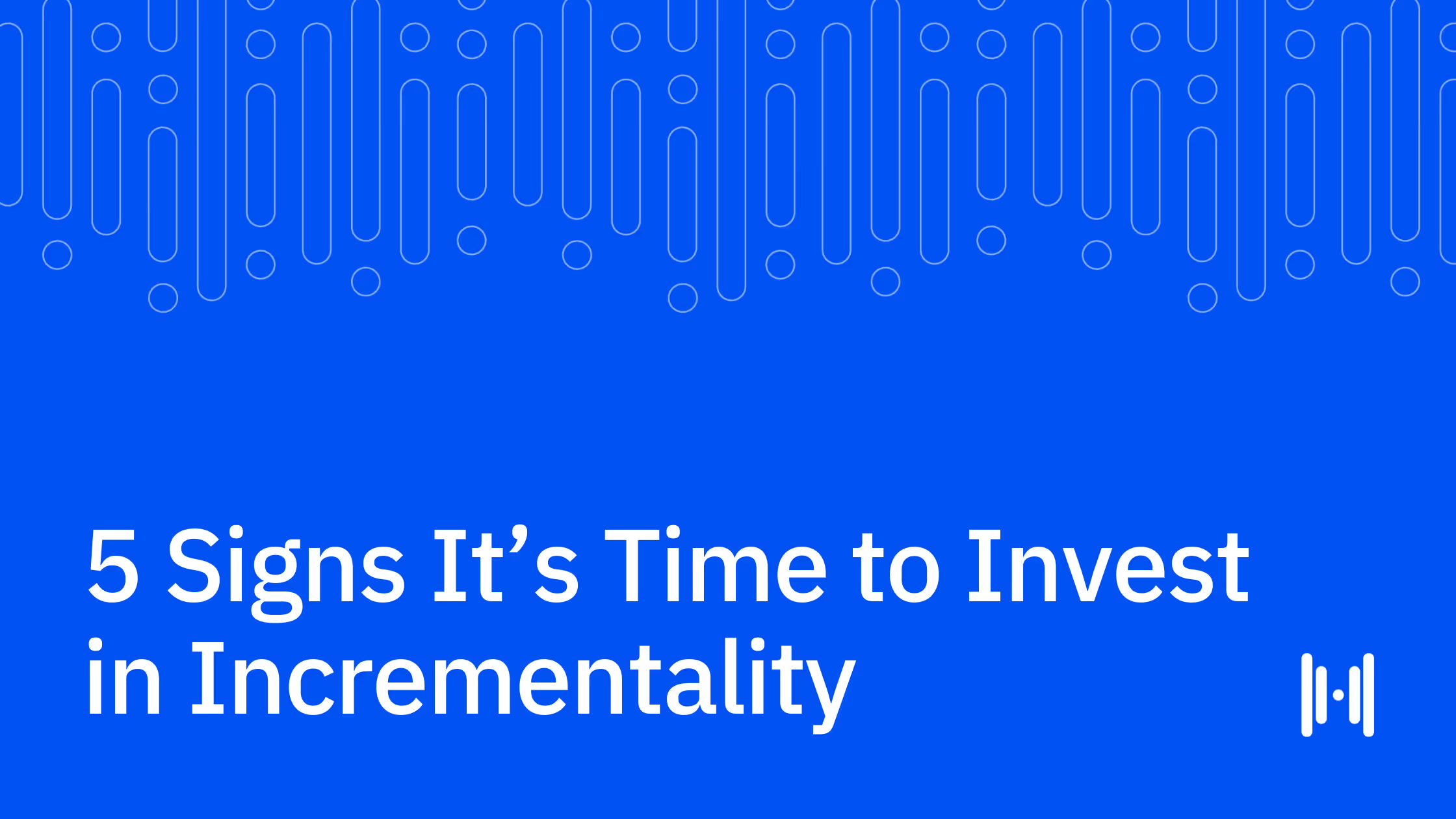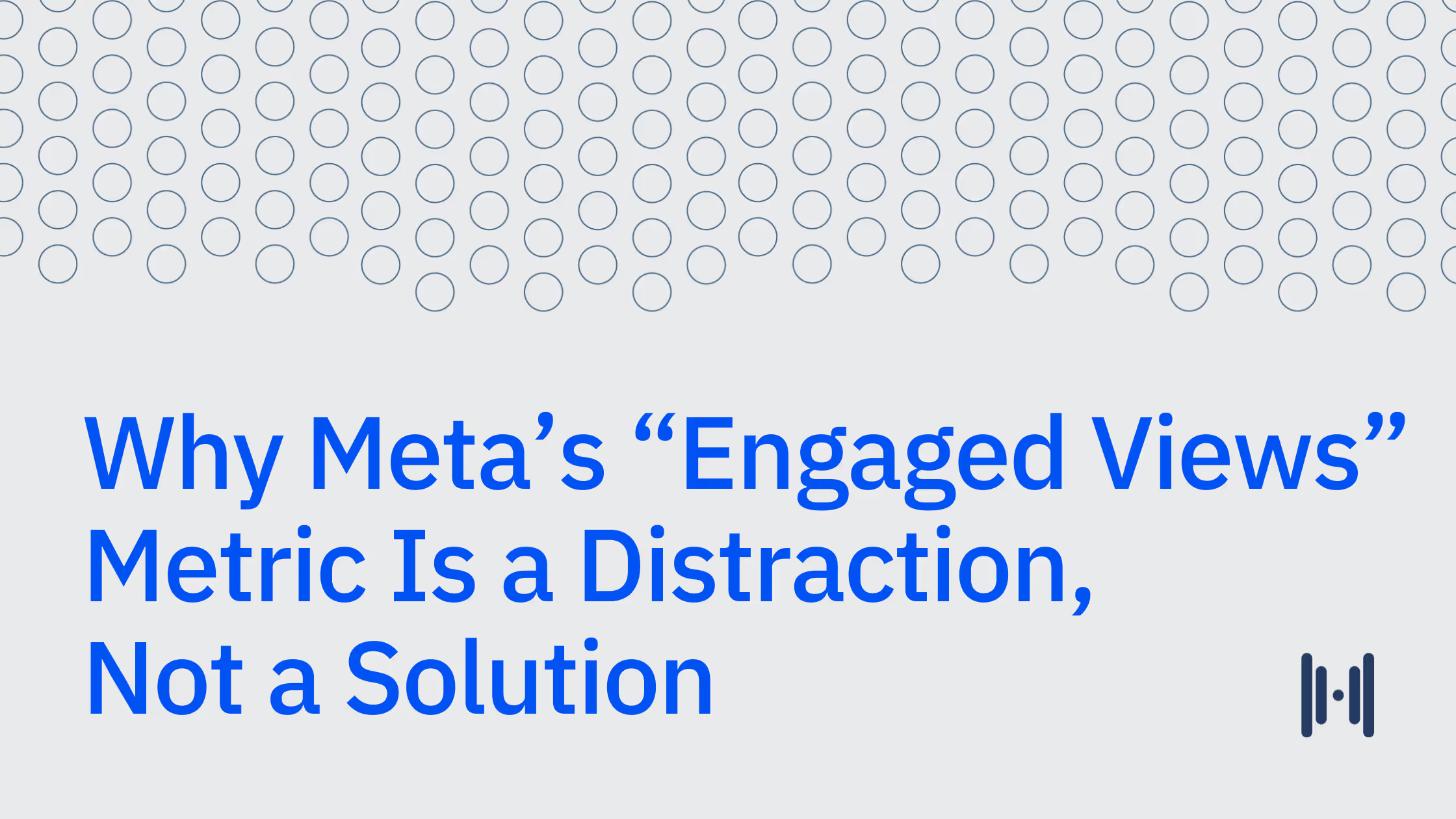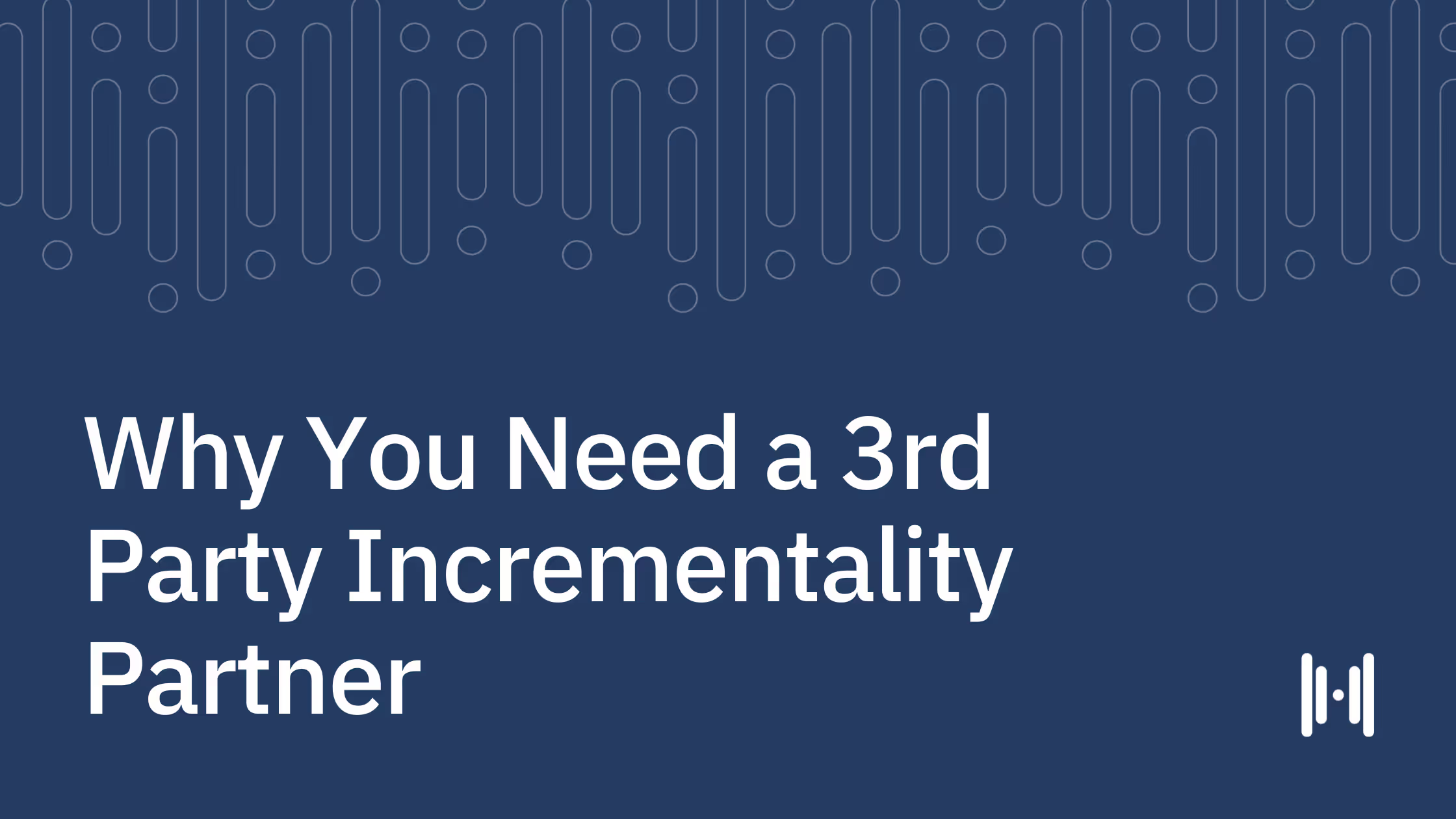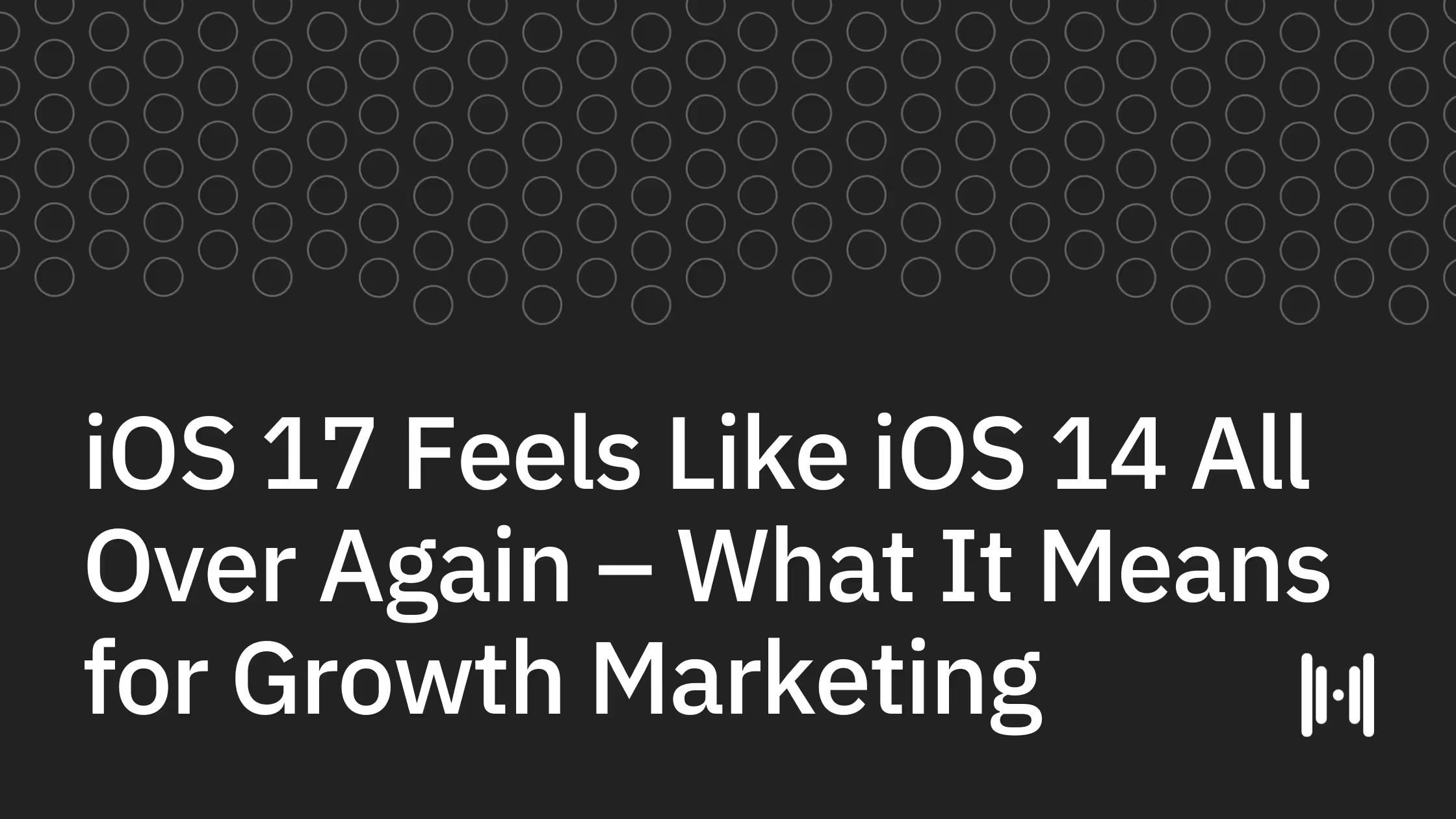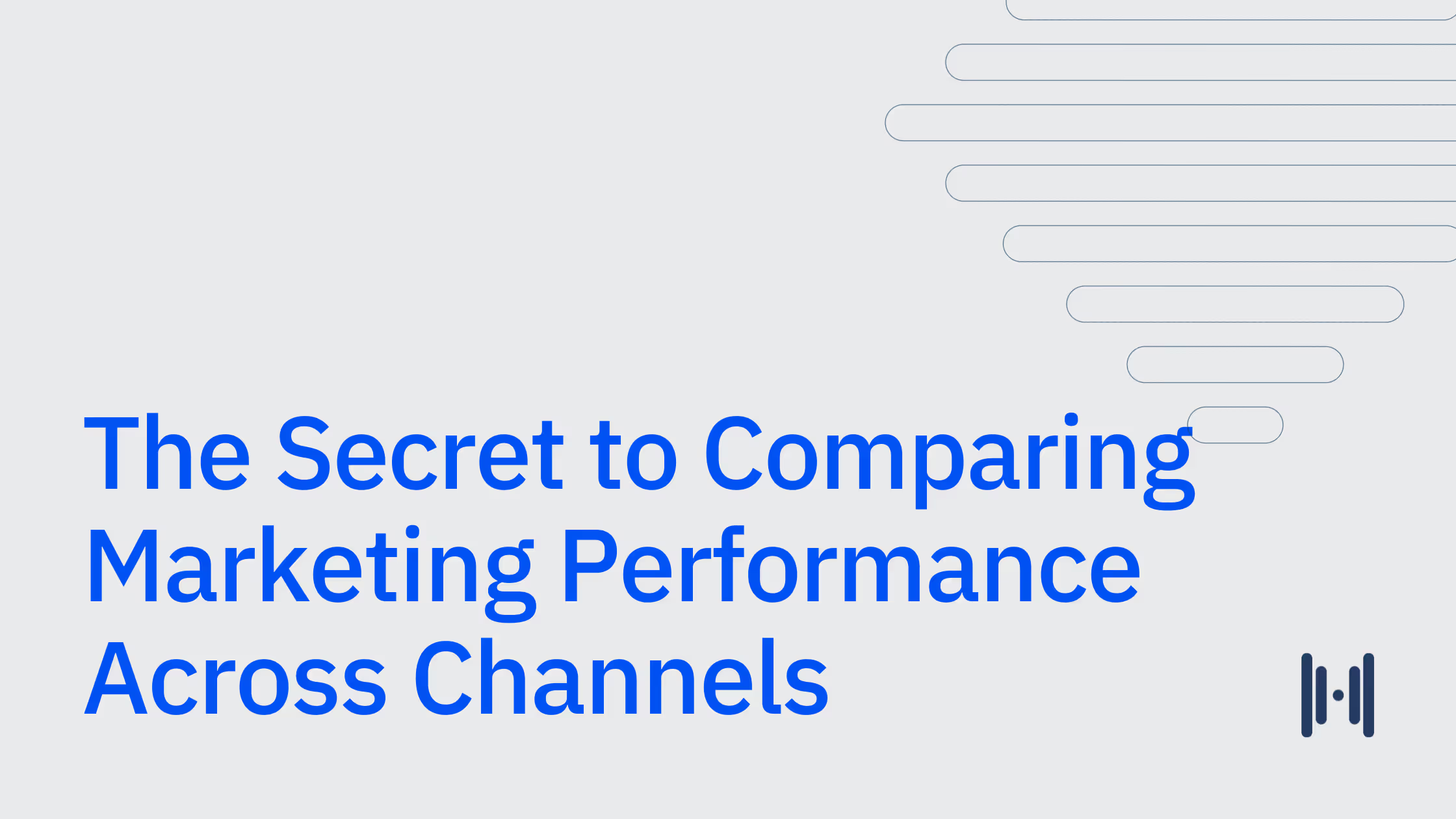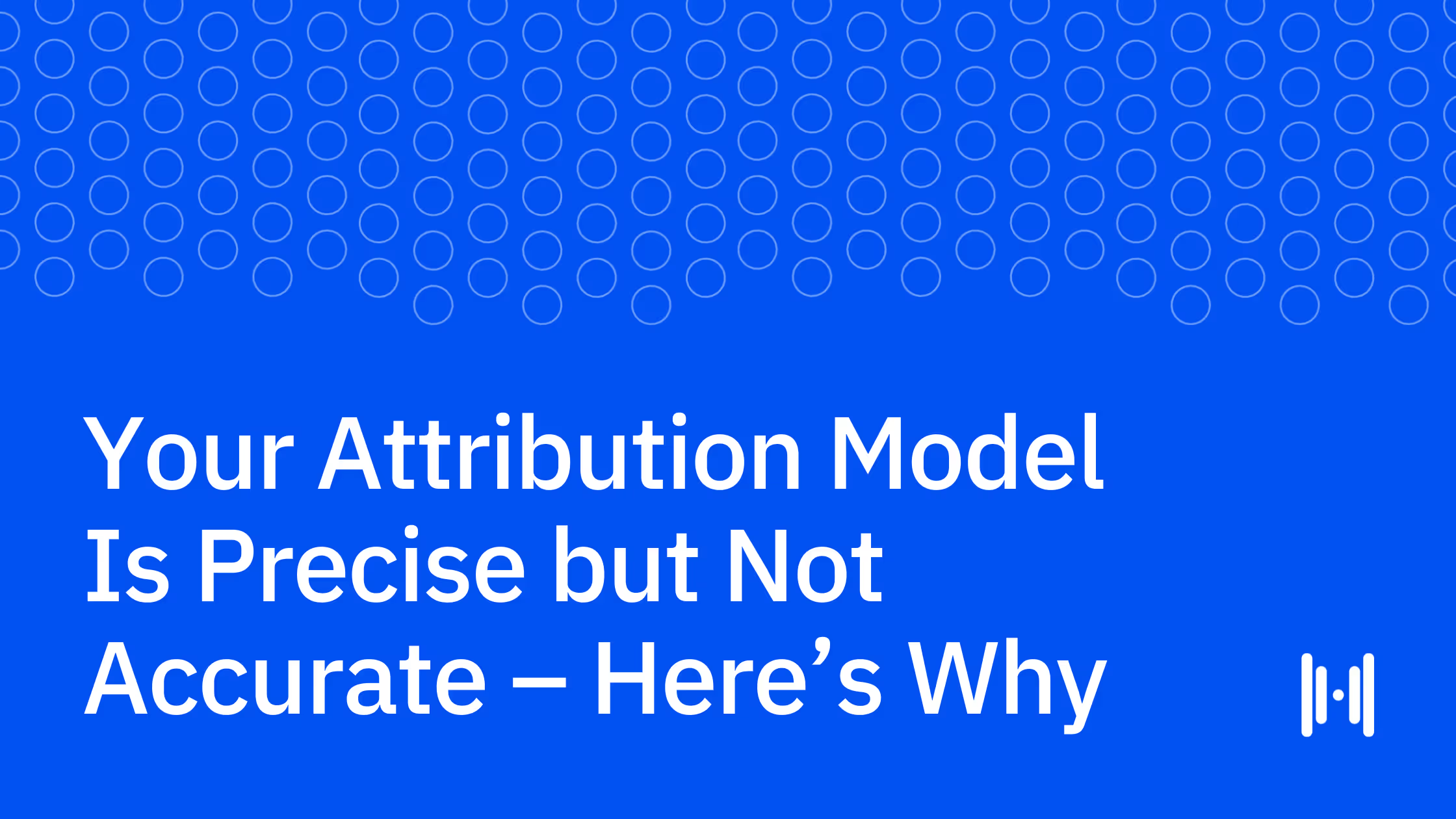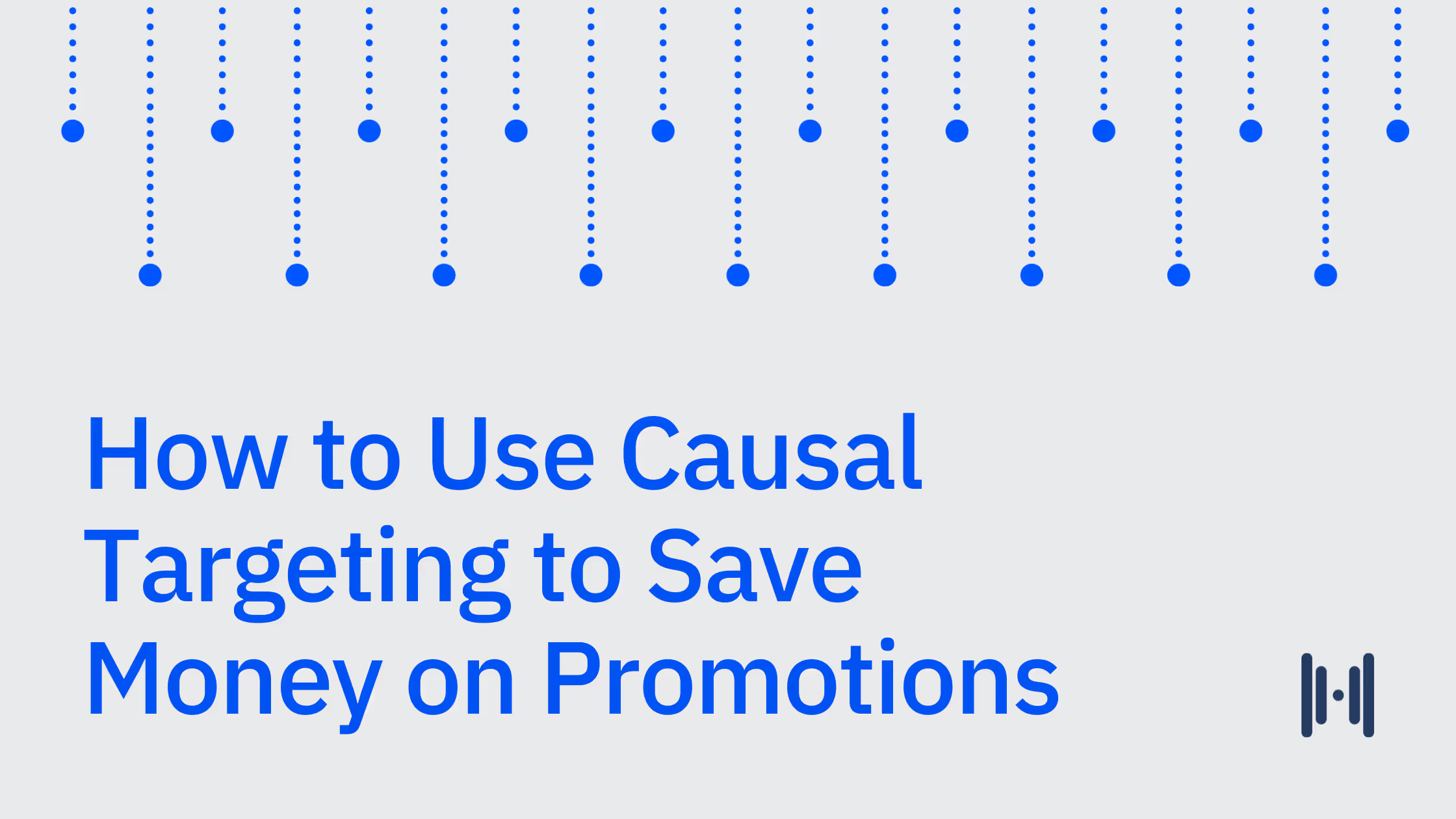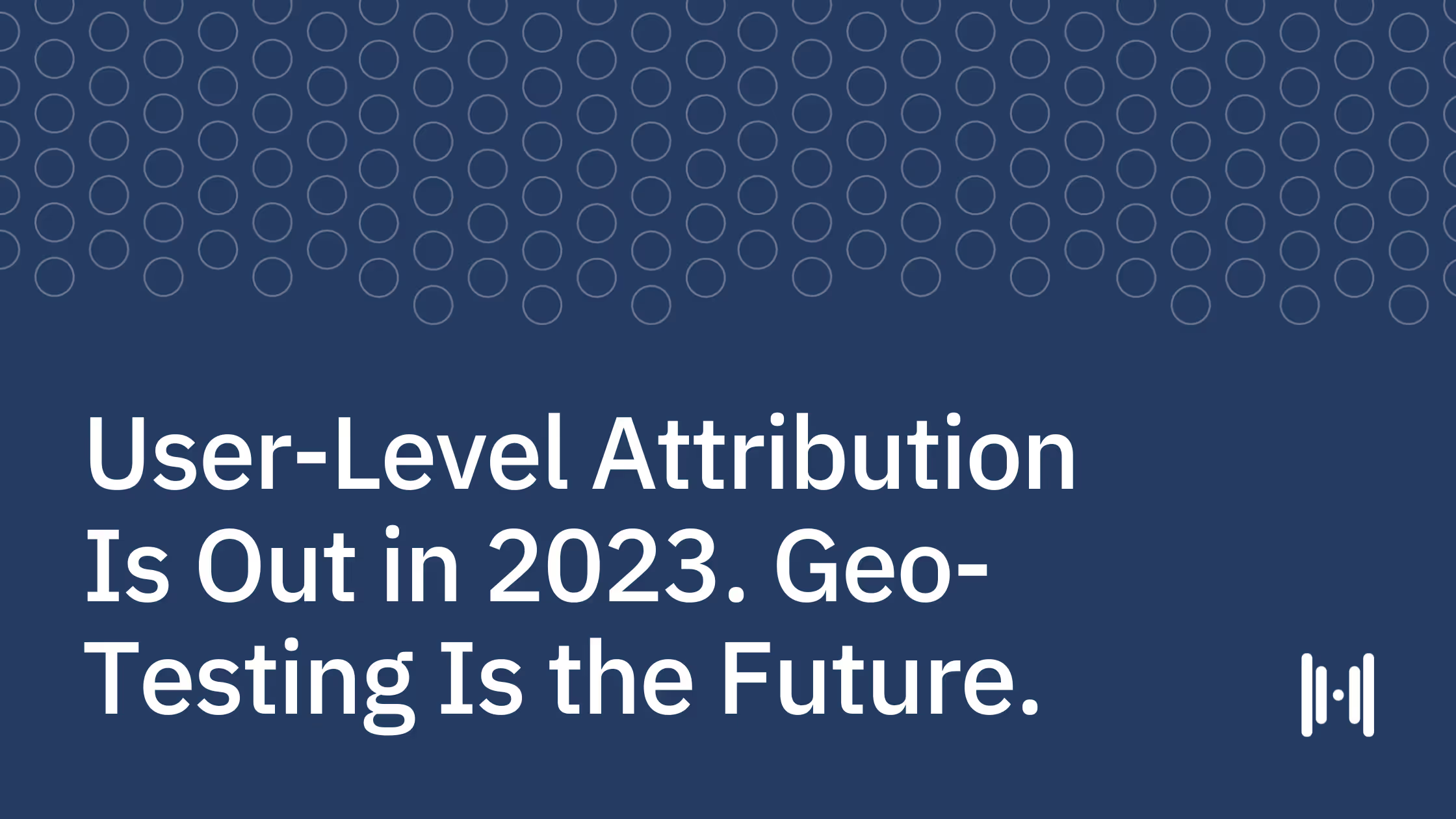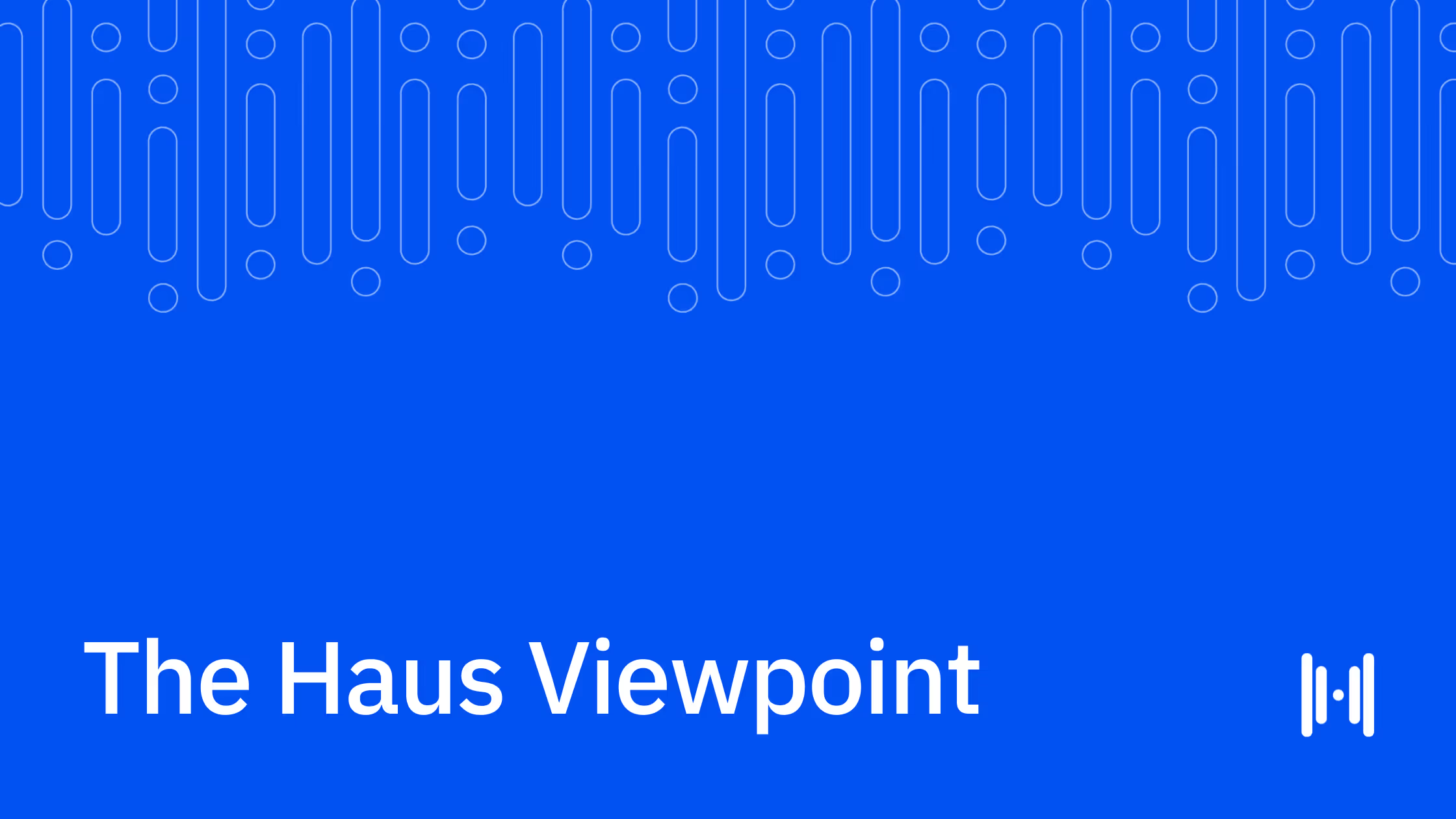
In the world of consumer brands, effective advertising is powered by algorithms adept at identifying ready-to-buy customers. This ability to reach these high intent customers at scale fuels the growth of emerging brands during their critical go-to-market phase, enabling them to achieve profitable customer acquisition.
As brands mature, they establish touchpoints with potential customers across various places. Organic brand awareness gains momentum through sources such as:
- Recommendations from friends or family.
- Presence in wholesale and/or owned retail channels.
- Earned media, courtesy of press coverage or influencer endorsements.
- Owned media, leveraging algorithm-driven content feeds like TikTok and Reels.
Concurrently, these brands venture into advertising across multiple paid channels. The confluence of new paid and organic channels consistently delivers droves of ready-to-buy and in-market customers.
The Acquisition Flywheel Takes Off
Often overlooked in this compounding influx of awareness is the improved efficiency of channel level metrics like Cost Per Acquisition (CPA) and Return on Ad Spend (ROAS).
Ad platforms excel at serving ads to in-market customers, and the awareness generated beyond any single platform's ad account—both organically and through other paid sources—continues to bolster the brand's ability to deliver ads to high-intent users across all paid platforms. For instance, a brand's efficiency on Meta not only benefits from growing organic awareness but also from increasing paid awareness supported by other platforms.
This phenomenon of increased platform efficiency is witnessed during fleeting moments—a celebrity mentioning the brand in a social media post or inclusion in a prominent holiday gift guide. During these times, it is clear to see the efficiency gains insight of an ad account.
Yet, the baseline increase in ad platform efficiency that growing brands consistently experience is less acknowledged. Paid channels shift from meeting customers at the point of discovery to now meeting them lower in the funnel and thus appear to be more efficient.
Rather than having to own the whole conversion journey from awareness through consideration to purchase, these channels insert themselves into an already active purchasing journey and try to influence the sale. This tends to be even more true with evolving black-box ad products like Meta’s Advantage Shopping+ and Google’s Performance Max campaigns which seem to prioritize delivery to warmer audiences.
Conversion Optimized Ad Delivery - Friend or Foe?
With so many active in-market customers in the funnel, it becomes tricky to decipher when a channel or strategy within a channel is actually driving customer acquisition or rather when it is riding the coattails of other sources of demand–serving up cheap impressions to users who are already going to convert.
Remember, ad platforms are intelligent and extremely good at finding users who are ready to convert, so investigation here is critical–but difficult to set in motion because most are busy riding the high of reports of great performance inside of their ad accounts. After all, who wants to say no to better ROAS?
Left unchecked, concerns begin to loom for many maturing brands and questions start to arise when paid media teams continue to ramp up their seemingly strong efforts on channels and business level outcomes remain flat. These problems manifest themselves as:
- Flat top-line growth despite increased reported revenue within ad platforms
- Escalating actual Customer Acquisition Costs (CAC) despite reported CPA within platforms remaining steady or decreasing.
- Confusion amongst channel managers who wonder how or why to change strategies when their platform guidance suggests strong efficiency.
Platform Results Disconnect From Business Level Results
When results from in platform data start to diverge from business level performance, it begs to wonder whether the intent based targeting systems in ad platforms are starting to hurt more than help. If a brand is putting more money into a tactic or channel with a supposed ROI and that ROI holds over time with additional dollars behind it, the business level impact should be obvious.
When this doesn’t play out as expected, this piece of a brand’s marketing is not driving the business forward. Rather it is likely deteriorating bottom line performance by appending additional acquisition costs onto customers who are already going to convert.
Optimizing Towards Incrementality
Incrementality is well discussed in the marketing community in the context of demand capture tactics like branded search. The common objection to brand search is: “if someone is searching for my brand already, I don’t need to show them an ad” – certainly a valid criticism. Less discussed is how incrementality factors into demand generation channels like paid social.
Incrementality always comes up first in the context of demand capture because it’s well understood that a user typing a brand’s name into a search bar immediately qualifies that user as extremely high intent prior to exposing them to marketing–thus raising the question of whether marketing is needed.
But, revisiting the idea that most demand generation channels benefit from ad delivery systems that excel at finding high intent users–and noticeably show better performance during periods of heightened demand–the same level of scrutiny regarding incrementality needs to be applied to these channels as well. This is especially true for growing brands who command strong awareness and demand from multiple organic and paid sources.
For brands that consistently generate ready to convert customers through sources outside of any one individual ad channel, it becomes a strategic exercise to find the right mix of channels and tactics within channels. A shift must happen: away from delivering impressions to users who are going to convert regardless of ad exposure and towards nudging users in the consideration phase while also introducing net new users to the funnel.
How To Find What’s Driving Your Business Forward
Uncovering which paid investments are doing the heavy lifting in driving real customer acquisition and which are tagging on to users likely to convert anyway is critical to driving top-line growth and protecting the bottom line from unnecessary marketing expenditure.
Unlocking Clarity with Structured Geo-Holdout Tests
So, how can brands recalibrate their strategies? The answer lies in the world of structured geo-holdout tests—an essential tool that empowers brands to discern true marketing impact and uncover sources of incremental marketing spend.
Geo tests allow brands to simulate the impact of turning off an element of their marketing mix to observe the impact on business level sales data. They allow brands to understand if a certain channel or strategy is driving real business level outcomes or merely taking credit for activities that are already likely to occur.
If a supposedly well performing marketing tactic is turned off, the hit to sales should be obvious–but oftentimes does not show up as revealed by geo lift tests.
A well designed test analyzes a brand’s historical sales data to create two similar clusters of regions. One of these groups serves as a holdout group which does not receive exposure to the media of the marketing tactic in question, while the other group does.
Since these groups have been proven and selected on the basis of their sales patterns behaving similarly over time they represent an ideal testing environment to introduce marketing exposure. Once the test is stood up and the treatment is applied, the brand is able to analyze any divergence that occurs between the two groups post exposure.
For marketing tactics that are incremental and drive real business results, the sales data in the treatment group will show strong lift and divergence from the holdout. This incremental lift can be quantified by taking the difference between treatment and holdout. Brands can even calculate a Cost Per Incremental Conversion by dividing their ad spend from this lift amount during the testing period.

For others that are not incremental and do not drive real business results, the sales data in these groups will follow a similar pattern pre-treatment not showing lift. In these cases, cost per incremental conversion will appear much higher than the supposed strong results inside of ad platforms–indicating that the channel or strategy in question is not driving actual business level results, but likely inserting itself into many already active and likely to convert buyers journeys.

Structured geo tests provide an unbiased view into the performance of your marketing investments and quantify impact based on business level results.
These tests enable brands to:
- Identify whether a channel is genuinely driving results or merely taking credit from another source of awareness.
- Determine the optimal budget and blend of tactics and channels to achieve the most incremental outcomes.
- Uncover new channels that may currently underestimate their true impact due to measurement limitations particularly in the face of privacy changes and cookie deprecation.
- Become more efficient with marketing investments, reallocating non-incremental spend back to the bottom line to boost profitability.
Real World ROI on Incrementality
Solving for incrementality has huge financial implications for brands. The decisions that result from clear incrementality reads allow brands to make marketing changes that drive increased top line growth or alternatively, preserve bottom line profitability.For example, in testing the incrementality of Snapchat, a brand may find the channel to be highly incremental to the business and have efficiency fall within their target CAC range which would allow them to continue to scale. They may have a read from a less efficient channel outside of their target CAC range and be able to reallocate those funds to Snap to drive increased top line revenue.

Conversely, the brand might find Snap to be non-incremental and driving no lift to the business. In this case, the brand can choose to entirely cut Snap from the mix and move all of those marketing funds back to the bottom line while continuing to see top line revenue remain stable.

Resource and Knowledge Constraints: Geo-Tests are Hard to Set Up
Running rigorous geo-tests demands a strong understanding of statistics and analytics. For many DTC brands, marketing teams often lack the analytical expertise required for designing rigorous tests and data teams are often too resource constrained to enable testing at the needed speed and frequency to drive impact. These issues can manifest in:
- Months of back and forth between marketing and data teams to stand up a single incrementality test.
- Poorly designed tests that rely on instinct to select treatment and holdout regions and negate any results due to initial design (Ie. “We will just hold out from Georgia and run in Florida since they seem like pretty similar markets”)
This is where Haus can help. Designed for brands who want to move fast and put the power of testing into the hands of marketers, Haus streamlines the process of designing a sound test and automatically interprets results allowing you to restructure your marketing efforts to optimize towards incrementality and invest with precision in places that drive business forward.
.png)
.png)
.png)
.avif)


.png)
.png)
.png)
.png)
.png)
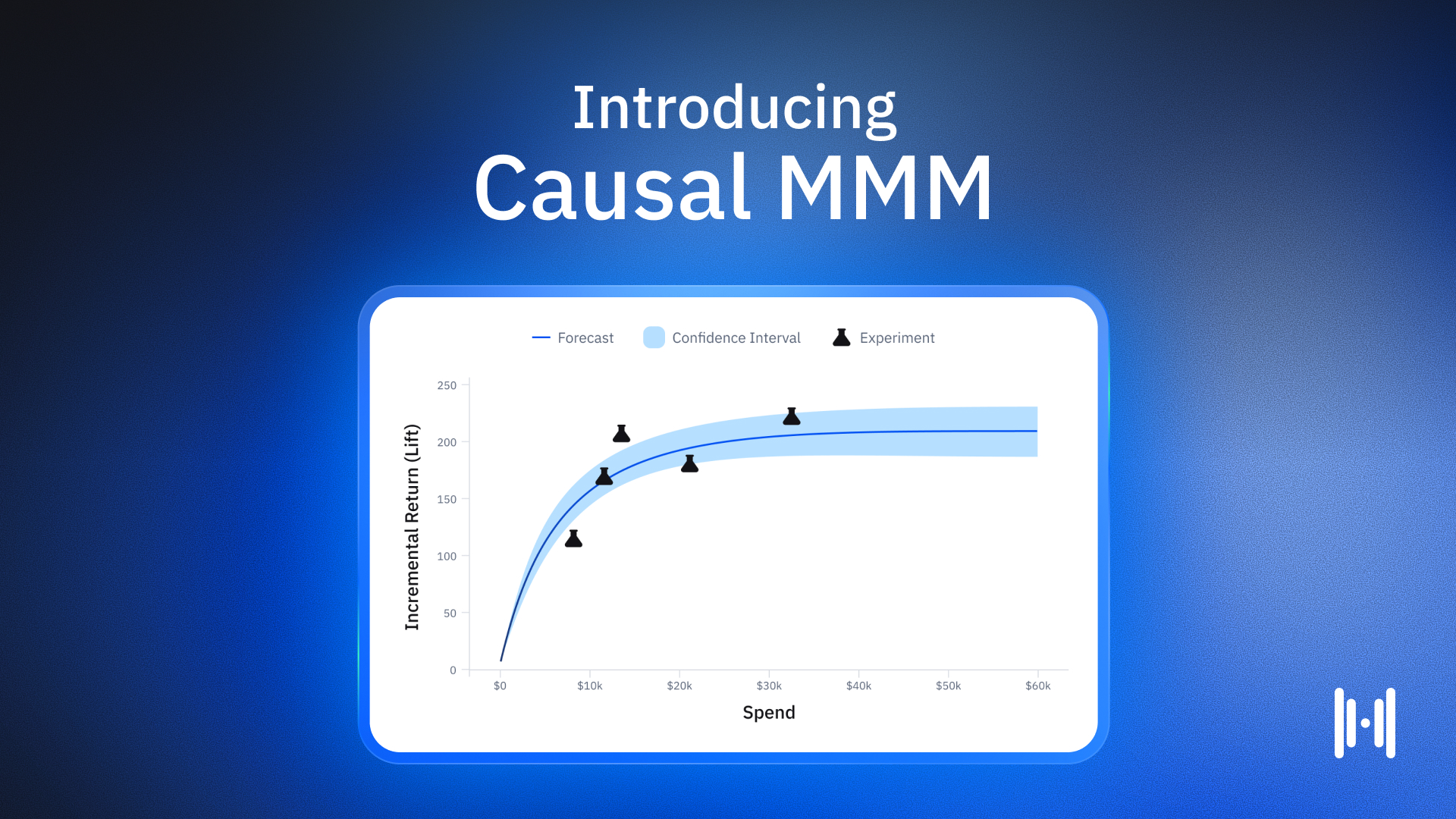
.avif)
.png)
.png)
.png)
.png)
.png)
.png)
.png)
.png)
.png)
.webp)
.webp)
.webp)
.webp)
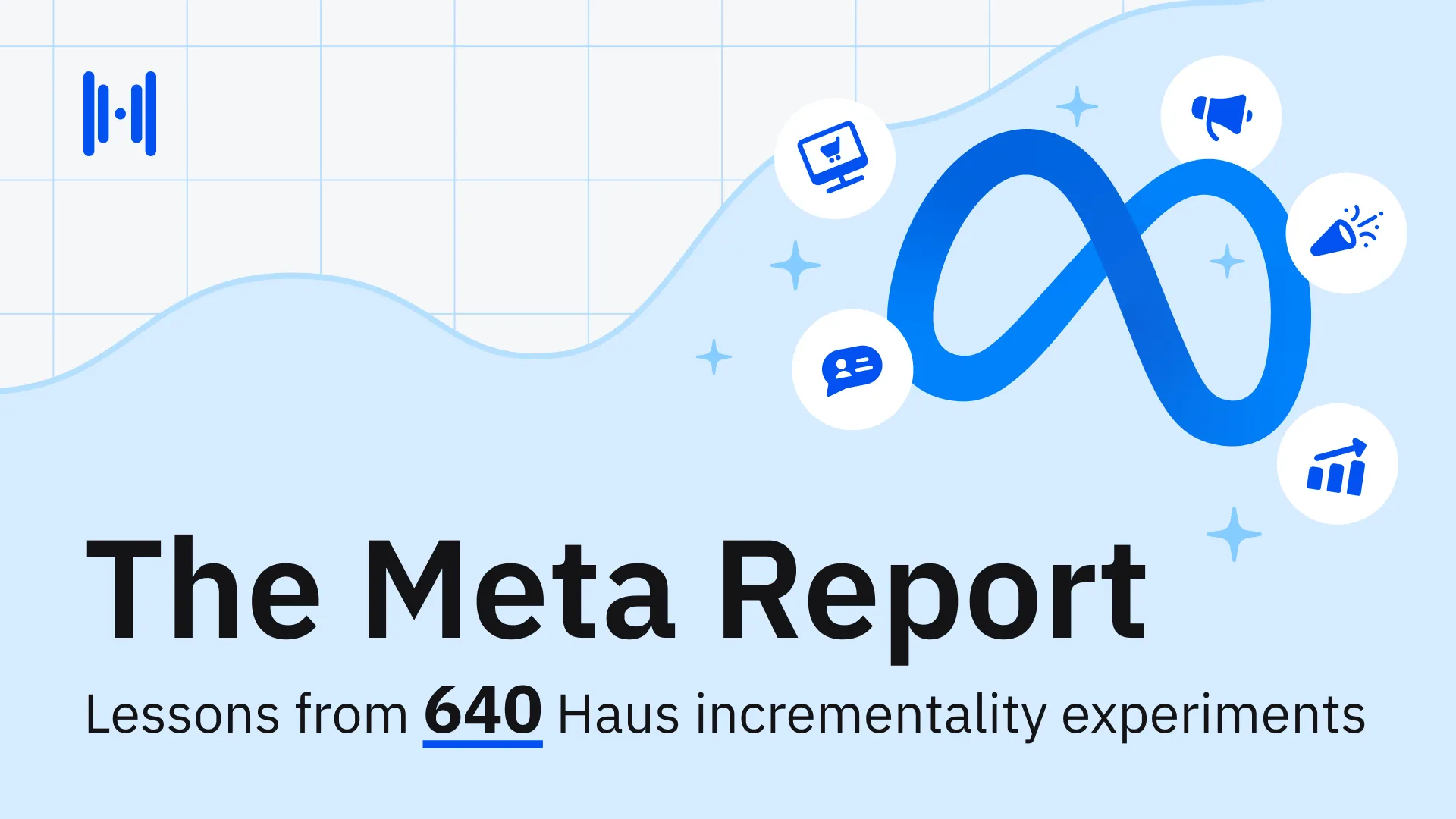
.webp)

.webp)
.webp)
.webp)
.webp)
.webp)
.webp)
.webp)
.webp)
.webp)
.webp)
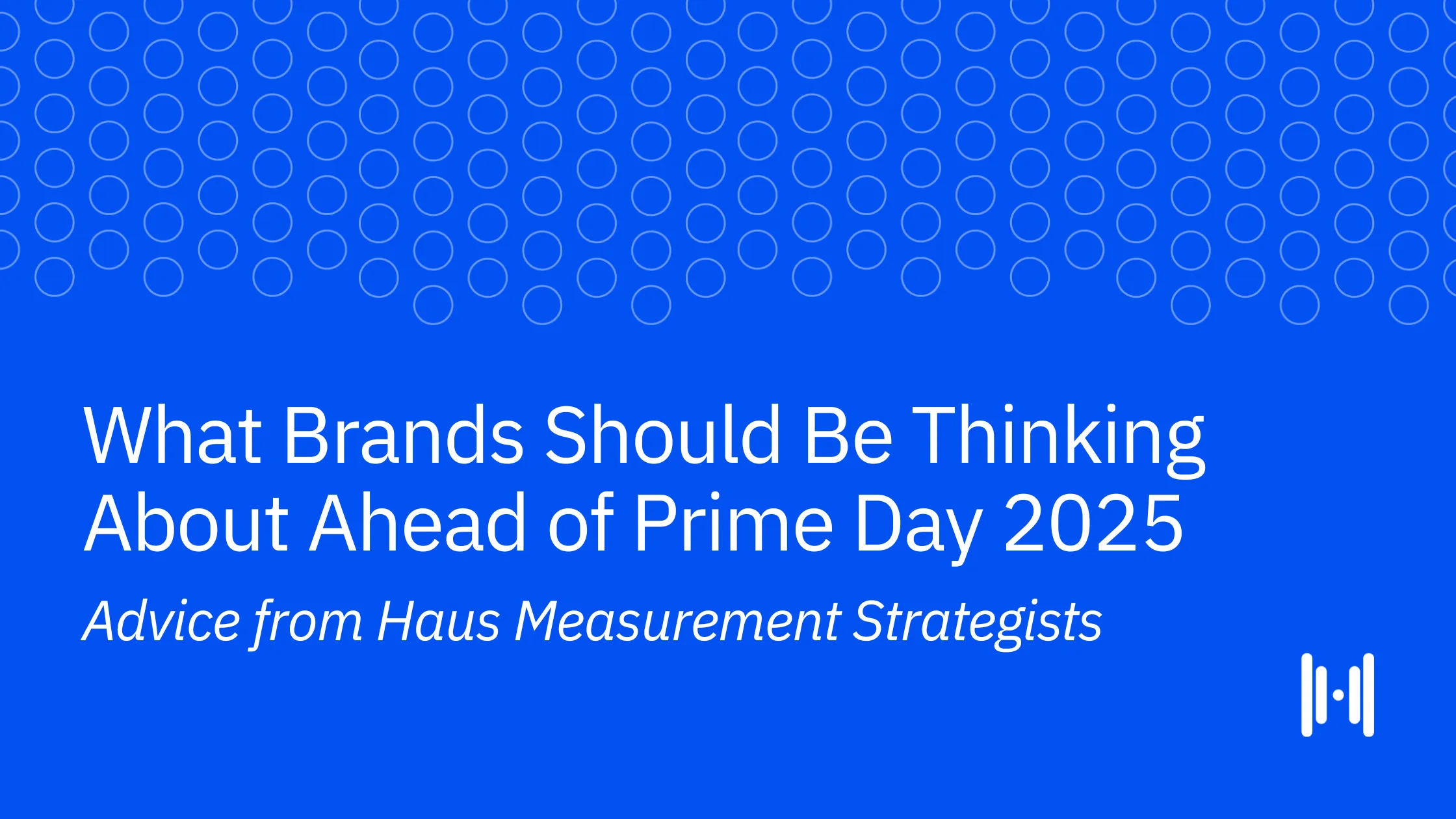
.webp)
.webp)
.webp)
.webp)
.webp)
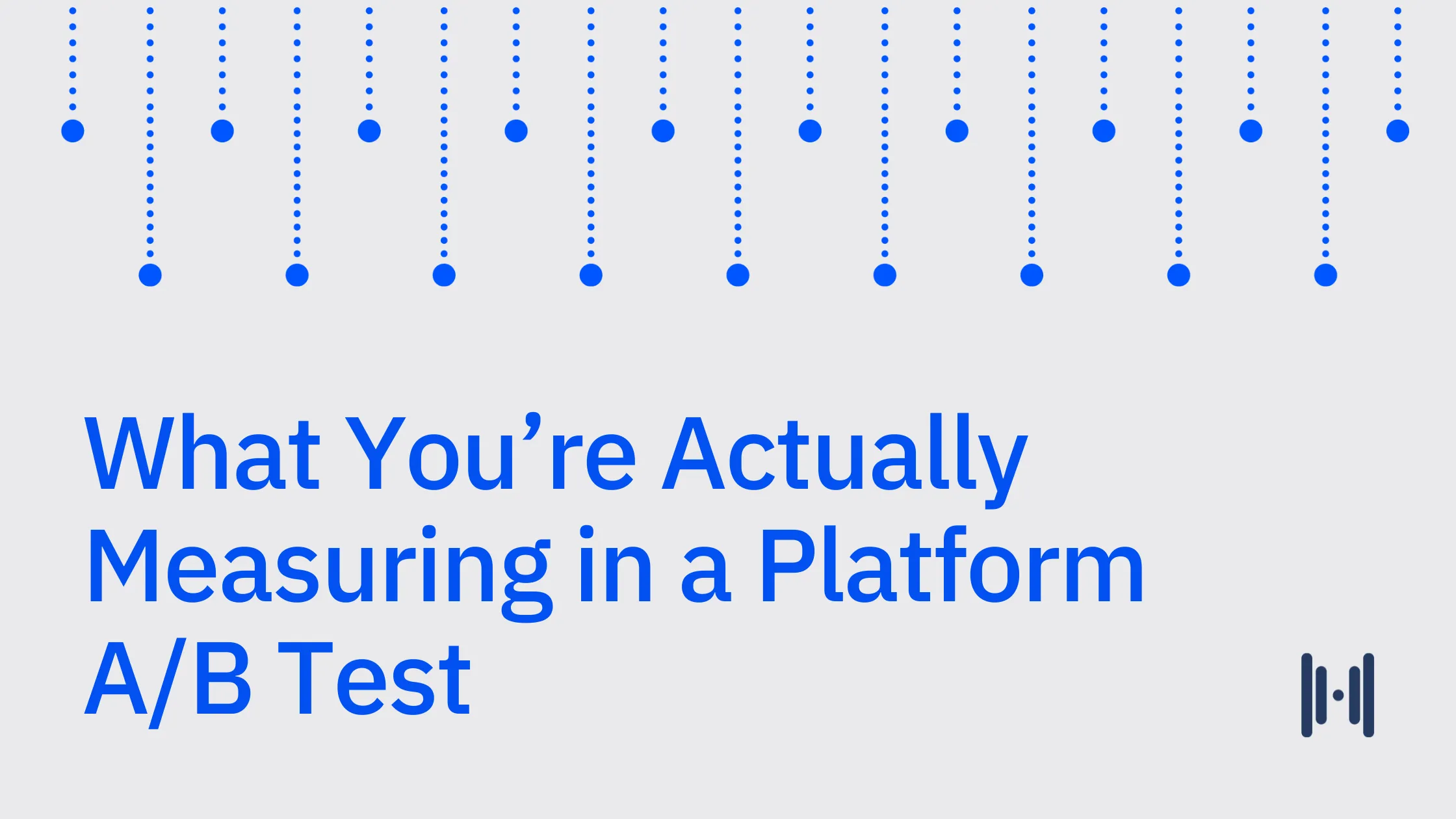
.webp)

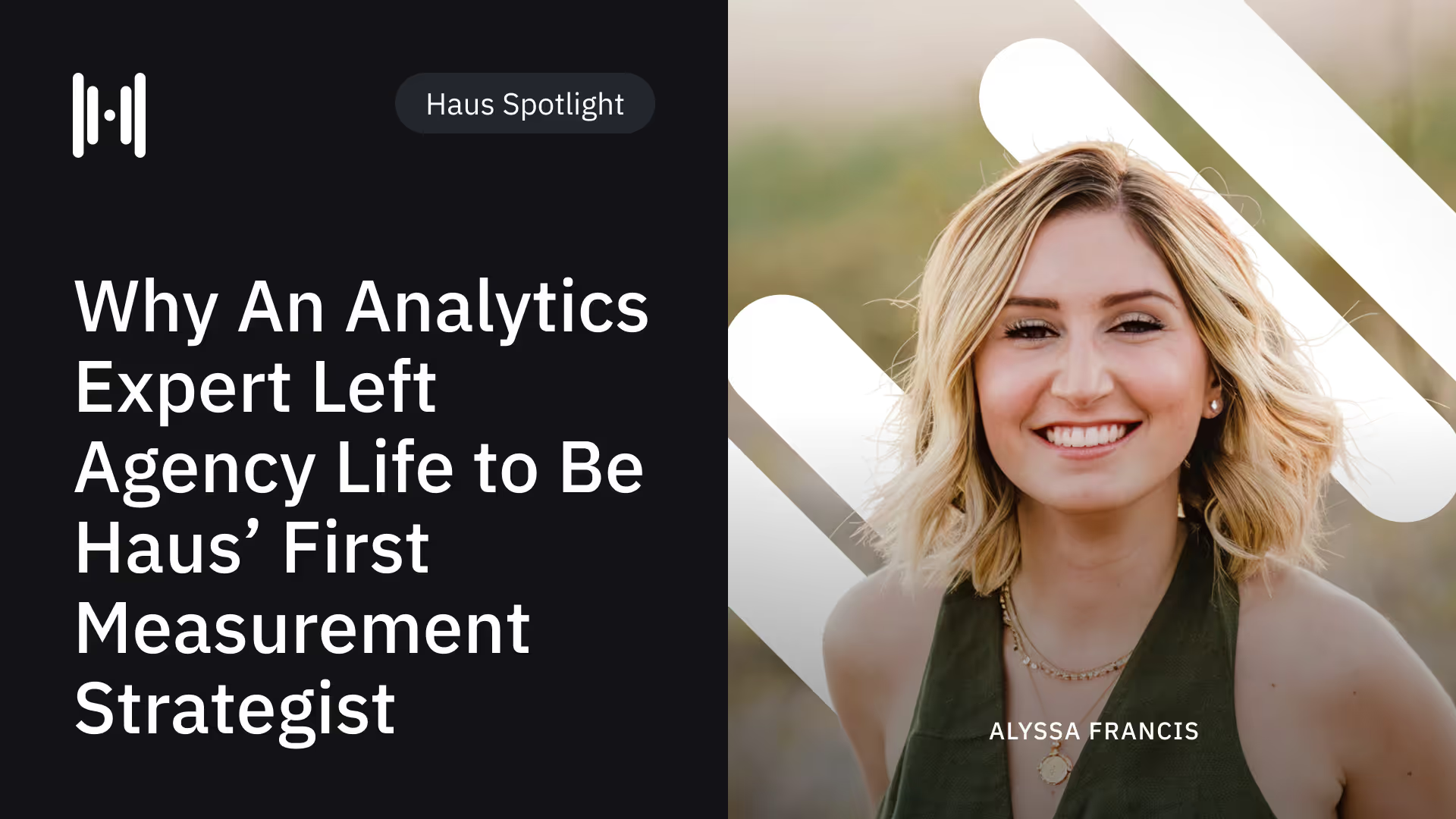
.avif)
.avif)

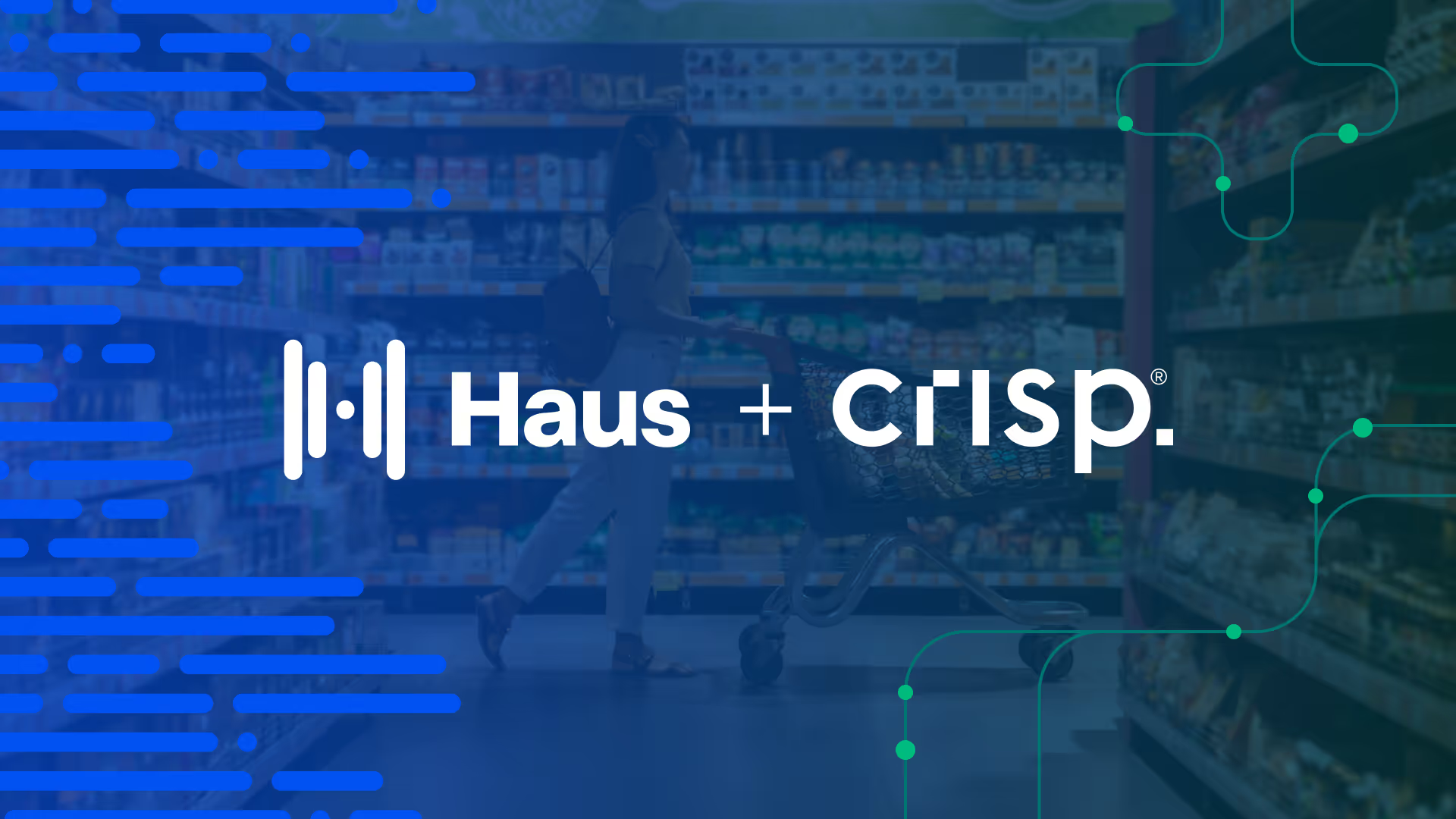
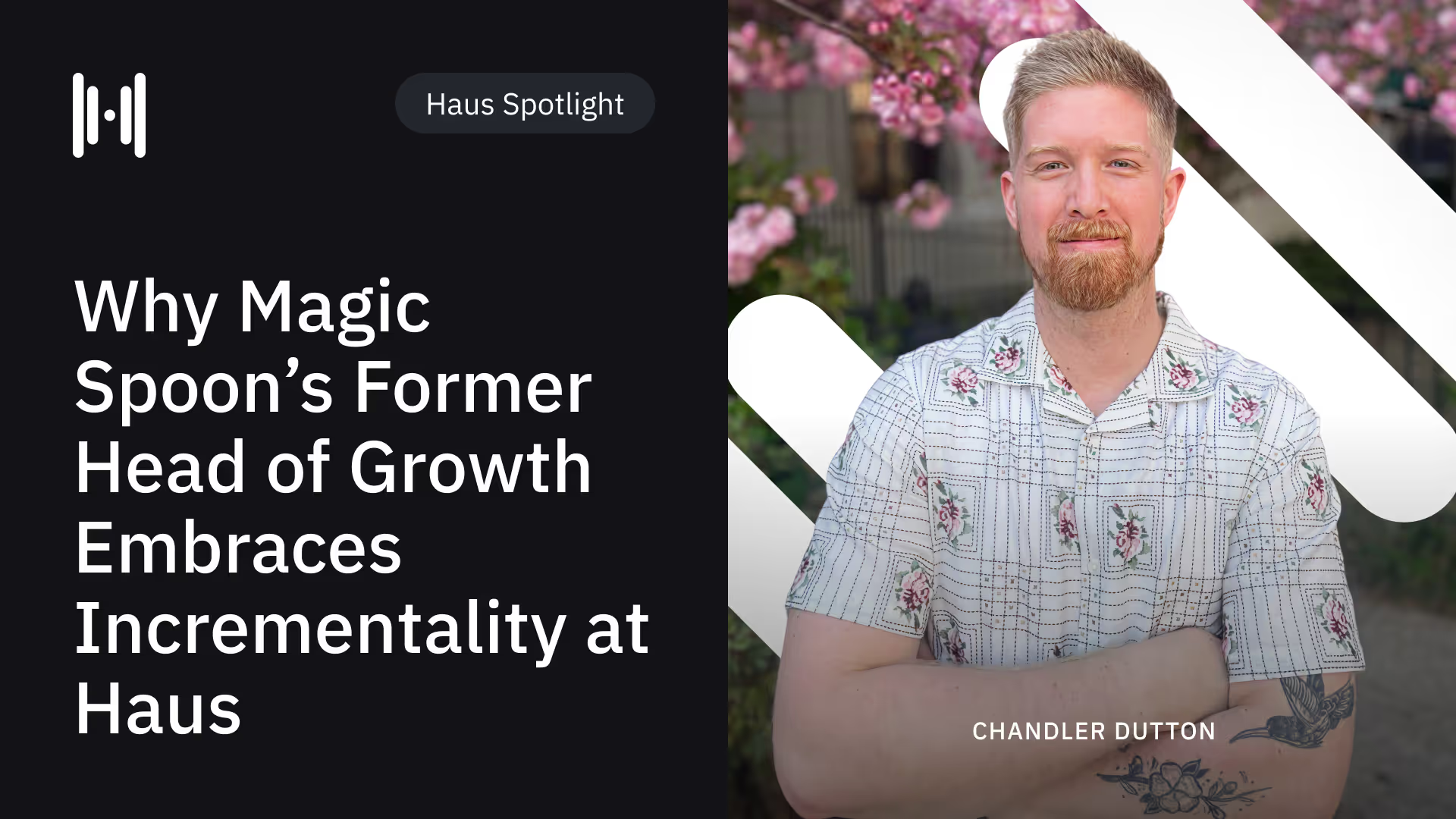
.avif)
.avif)
.avif)

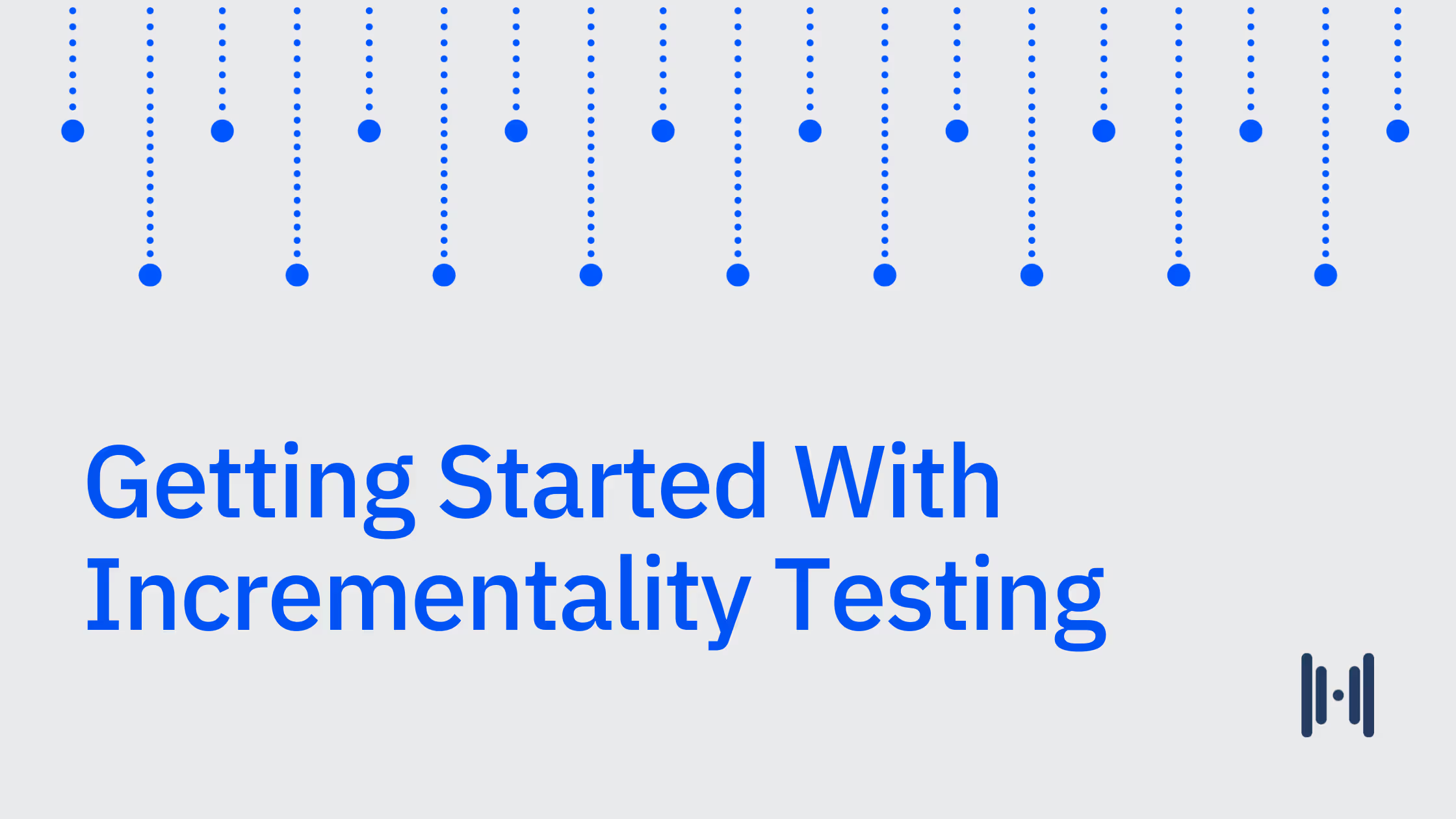
.avif)
.avif)
.avif)
.avif)
.avif)
.avif)

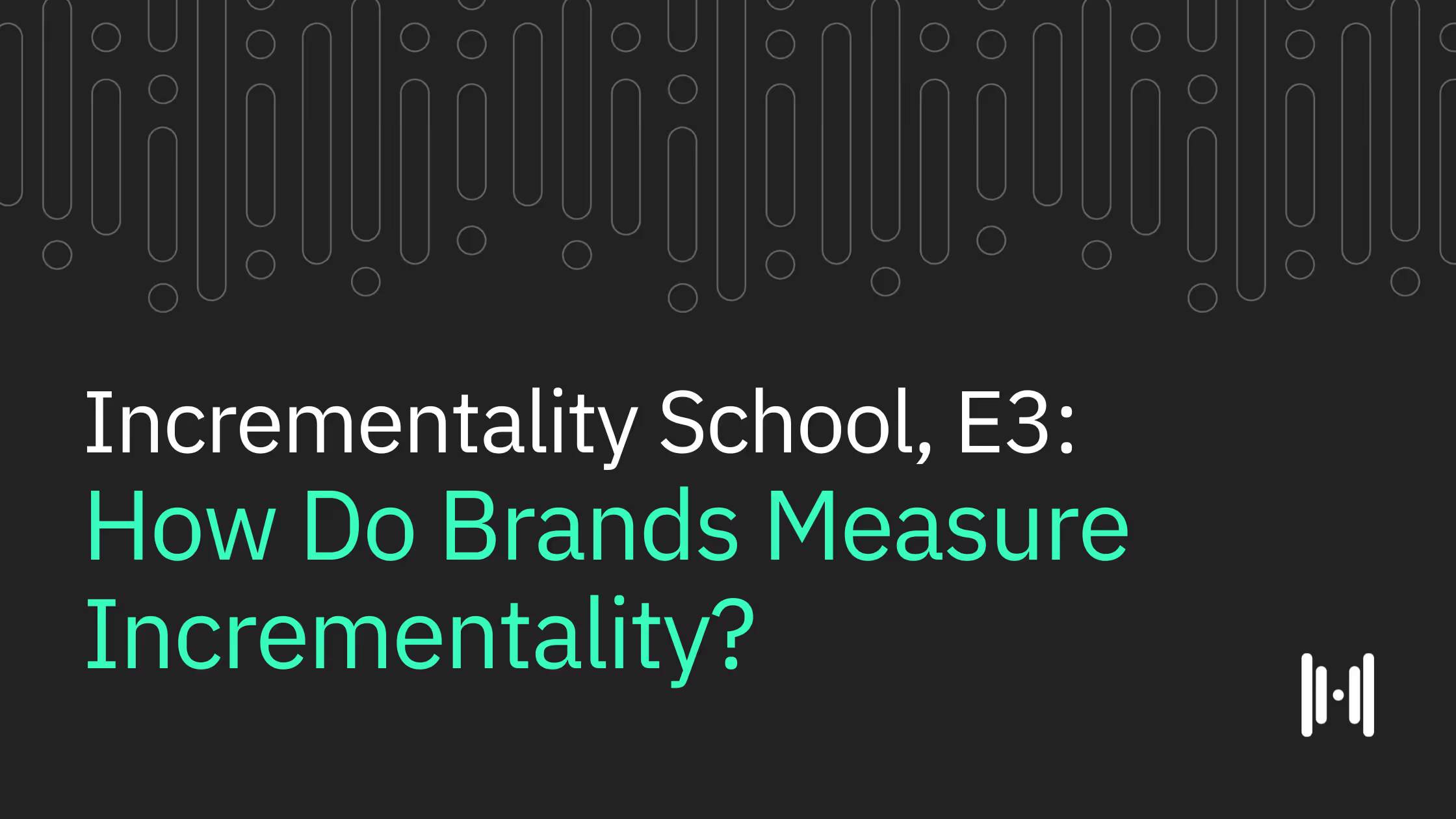


.png)
.avif)
.png)
.avif)
